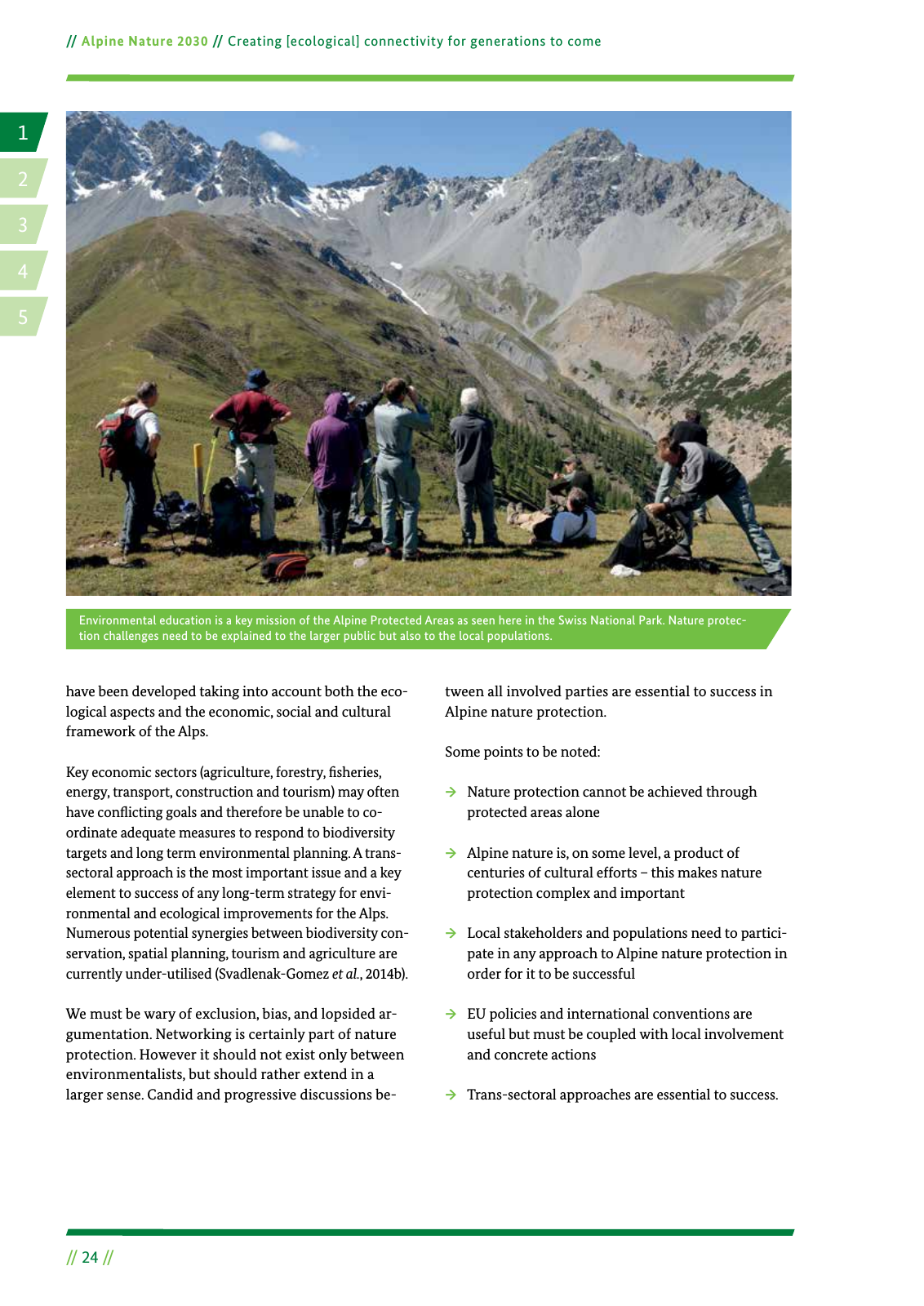14 2 5 3 24 Alpine Nature 2030 Creating ecological connectivity for generations to come have been developed taking into account both the eco logical aspects and the economic social and cultural framework of the Alps Key economic sectors agriculture forestry sheries energy transport construction and tourism may often have con icting goals and therefore be unable to co ordinate adequate measures to respond to biodiversity targets and long term environmental planning A trans sectoral approach is the most important issue and a key element to success of any long term strategy for envi ronmental and ecological improvements for the Alps Numerous potential synergies between biodiversity con servation spatial planning tourism and agriculture are currently under utilised Svadlenak Gomez et al 2014b We must be wary of exclusion bias and lopsided ar gumentation Networking is certainly part of nature protection However it should not exist only between environmentalists but should rather extend in a larger sense Candid and progressive discussions be tween all involved parties are essential to success in Alpine nature protection Some points to be noted Nature protection cannot be achieved through protected areas alone Alpine nature is on some level a product of centuries of cultural efforts this makes nature protection complex and important Local stakeholders and populations need to partici pate in any approach to Alpine nature protection in order for it to be successful EU policies and international conventions are useful but must be coupled with local involvement and concrete actions Trans sectoral approaches are essential to success Environmental education is a key mission of the Alpine Protected Areas as seen here in the Swiss National Park Nature protec tion challenges need to be explained to the larger public but also to the local populations

Hinweis: Dies ist eine maschinenlesbare No-Flash Ansicht.
Klicken Sie hier um zur Online-Version zu gelangen.
Klicken Sie hier um zur Online-Version zu gelangen.